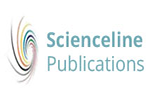(2025) METHANE EMISSION OF GOATS FED FIFTEEN DIETS: ON-FARM OBSERVATIONS. Online Journal of Animal and Feed Research. pp. 69-78. ISSN 2228-7701
|
Text
OJAFR15(2)69-78,2025.pdf - Published Version Download (504kB) |
Abstract
It is suggested that the measurement of methane production from enteric fermentation must be done under situations similar to that of typical farming methods. It is against this background that this study measured methane emission from goats on a farm to ascertain the real situation on most farms. The objective of this study was to measure performance and methane emission from goats fed Ghanaian ruminant diets comprising of basal diets supplemented with browse leaves and to determine the effects of temperature and humidity on methane emission. Ten West African dwarf goats (5 males and 5 females; average weight 14 kg ±1.01) were fed fifteen Ghanaian ruminant diets for four months. Each diet was randomly fed twice in 24 hours for 2 days in a month. Methane emission, temperature and humidity were measured using handheld gas methane detector. Completely randomized design was used. Dry matter intake (DMI) was lowest (P<0.05) when cassava (Manihot esculenta) peels were fed and highest (P<0.05) when plantain peels were supplemented with Moringa oleifera. Weight gain, DMI and methane emission from manure increased with time. The highest enteric methane emission was recorded (P<0.05) when untreated rice straw (749 ppm) was fed and the lowest was recorded (P<0.05) when Moringa oleifera leaves (313 ppm) were fed. High environmental temperature favored low methane emission and high humidity was associated with high methane emission. In conclusion, feeding browse leaves alone and browse supplementation with basal diets resulted in lower methane emission than feeding basal diets alone. Moderate weight gains were recorded. High environmental temperature was inversely related to methane emission and high environmental humidity was directly related to methane emission. It is recommended that, browse leaves be incorporated in the feed of ruminants, especially when environmental temperatures are low and humidity is high. © The Author(s) 2025
| Item Type: | Article |
|---|---|
| Keywords: | Basal diets; Browse leaves; Dry matter intake; Humidity; Temperature; Weight gain |
| Subjects: | S Agriculture > SF Animal culture |
| Divisions: | Online Journal of Animal and Feed Research (OJAFR) |
| Page Range: | pp. 69-78 |
| Journal or Publication Title: | Online Journal of Animal and Feed Research |
| Journal Index: | Scopus |
| Volume: | 15 |
| Number: | 2 |
| Publisher: | Scienceline Publication, Ltd |
| Identification Number: | https://doi.org/10.51227/ojafr.2025.9 |
| ISSN: | 2228-7701 |
| Depositing User: | Dr. Saeid Chekani-Azar |
| URI: | http://eprints.science-line.com/id/eprint/1378 |
Actions (login required)
 |
View Item |


 Dimensions
Dimensions Dimensions
Dimensions